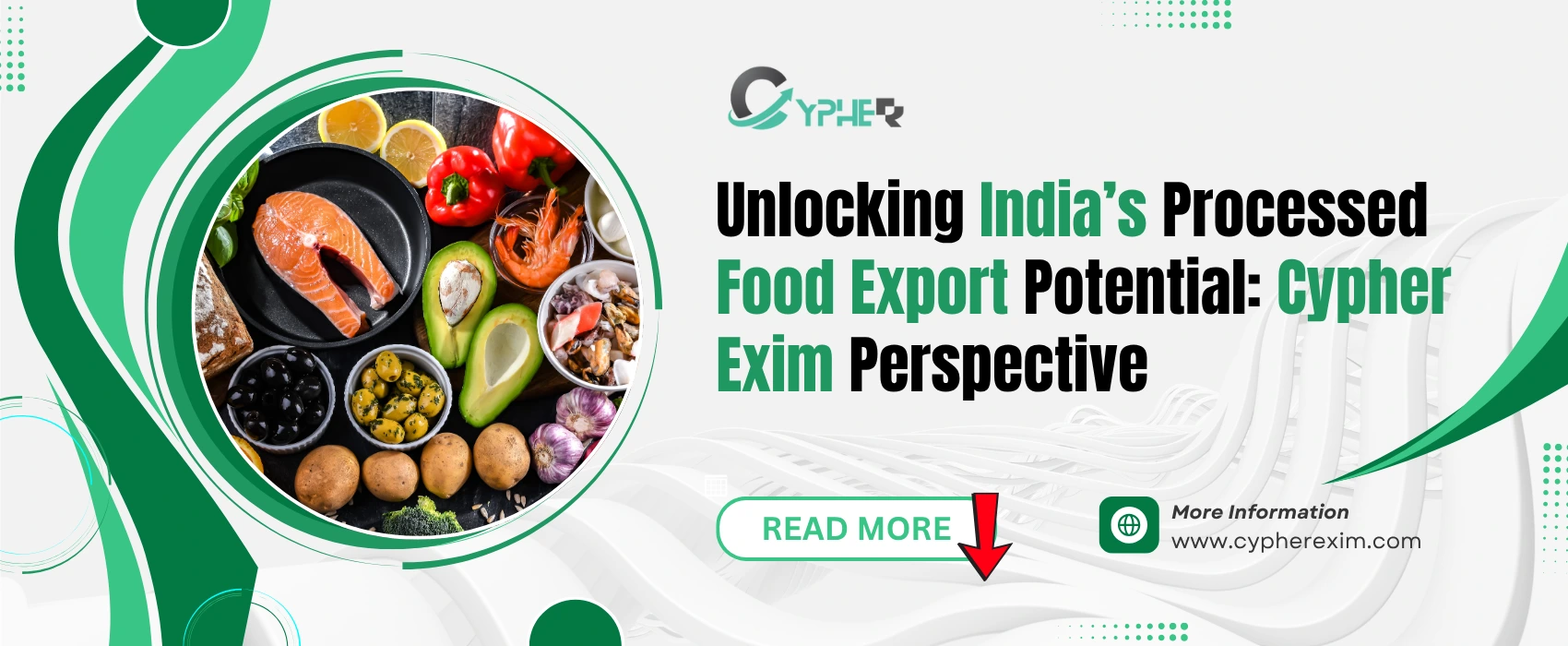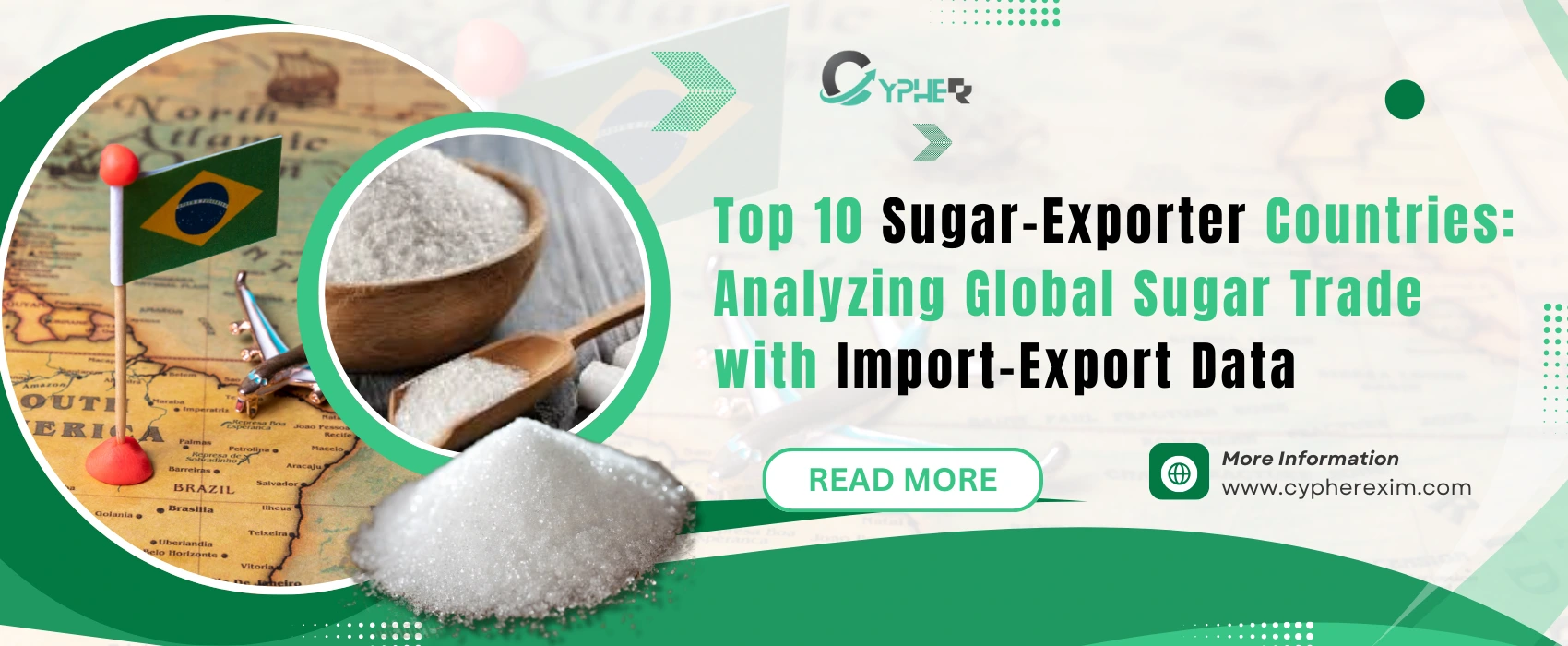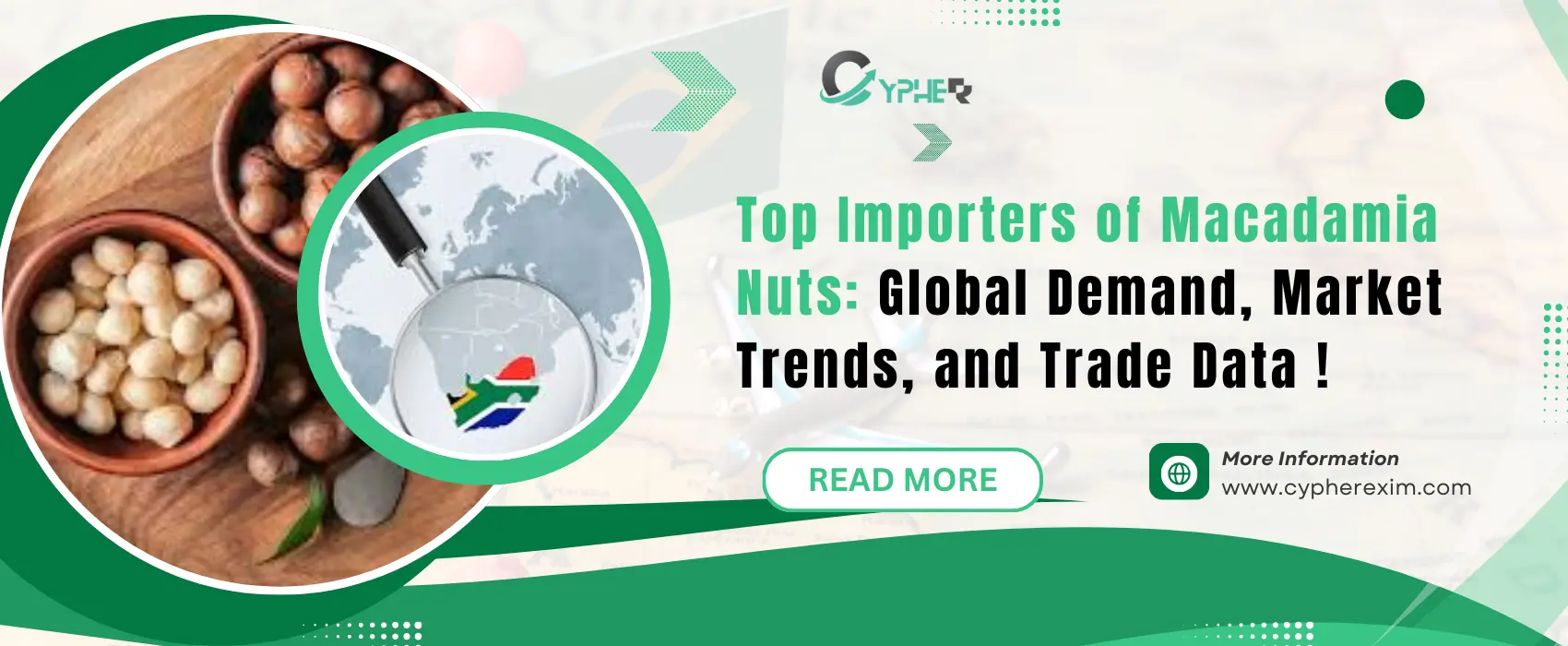Unlocking India’s Processed Food Export Potential: Cypher Exim Perspective

03 May 2025
The world of international trade is a dynamic field with many opportunities that are frequntly hidden by complexity for importers, exporters, logistics firms, and market research experts. Particularly in India, the processed food industry is growing into a major force that could change the nation's place in global marketplaces. A recent Deloitte-FICCI analysis noted that India's processed food exports had reached $8 billion and are expected to continue growing, providing unexplored prospects for supply chainn stakeholders. This article examines the unexplored facets of India's processed food exports, using import and export data to spur growth, regardless of whether you're an analyst analyzing market trends, an importer sourcing high-value products, an exporter looking for new markets, or a logistics provider optimizing shipments.
The Rising Tide of Processed Food Exports
The processed food industry in India is a major driver of the country's economic growth, accounting for 7.7% of its manufacturing gross value added (GVA) and creating a sizable number of jobs, especially in rural areas. The business, which is valued at about $160 billion, is driven by India's position as the fifth-largest economy in the world and the fact that, over the previous nine years, per capita income has doubled to ₹1.97 lakh. According to the Deloitte-FICCI analysis, the $8 billion prpcessed food export market is expected to increase exponentially because to rising demand for value-added, health-focused products like probiotics, prebiotics, and superfoods like millets and makhana (fox nuts).
This offers a fantastic chance to enter developing markets. For example, clean-label, high-protein, and gut-friendly foods are becoming more and more in demand from health-conscious customers in the US, Europe, and the Middle East. Due to their low glycaemic index, products like millet-based snacks are becoming more popular among people with diabetes and those who are health conscious. On the other hand, importers can find these high-profit goods to satisfy their markets' growing need. While market research analysts rely on import export data to spot trends like the 15% year-over-year increase in India's processed food exports to $2.13 billion in April 2025, driven by shipments of rice, meat, and fruit, logistics companies are essential to making sure these perishable goods get to their destinations efficiently.
However, because of factors including supply chain inefficiencies, regulatory barriers, and low market penetration in high-growth areas, the sector's potential is still underutilised. India, for instance, is the world's greatest producer of milk and spices, but its proportion in the global agricultural commerce is only 2.15%, suggesting that there is still much space for expansion.
Untouched Opportunities in the Processed Food Sector
1. Emerging Markets and Consumer Trends
As an exporter, you probably have your sights set on well-known markets like the US and Europe, but there is a ton of unrealized potential in places like Africa, Latin America, and Central Asia. India exported $51.2 billion worth of goods to these regions in 2023, $17.7 billion and $3.8 billion, respectively, with processed foods like cashew nuts, bananas, and mangoes seeing robust development. India's fruit and vegetable exports, for example, increased 14% to $3.7 billion in 2023–2024, indicating demand that exporters can take advantage of by focusing on these areas with customized goods.
From the standpoint of an importer, sourcing from India provides access to distinctive items like makhana, which is becoming more and more well-liked because of its high nutritional content and low calorie content, as well as economic advantages. By taking advantage of programs like the India middle east europe economic corridor, which aims to cut shipping costs and delays, logistics companies may optimize routes to these areas. Import export data can be used by market analysts to monitor customer preferences, such as the rising demand for fortified dairy products and functional beverages, which are predicted to continue to grow until 2030.
2. Technology and Supply Chain Innovation
The food processing industry in India is changing as a result of the integration of blockchain, IoT, and AI. This presents chances for logistics firms to optimize their processes. Blockchain, for instance, can improve traceability and guarantee adherence to strict sanitary and phytosanitary (SPS) regulations in markets such as the EU. Nevertheless, a lot of logistics companies and exporters underuse these technologies, losing out on opportunities to cut expenses and post-harvest losses, which are still major problems in India.
From your perspective, adopting digital tools can provide a competitive edge. Exporters can use IoT to monitor cold chain logistics, ensuring product quality during transit. Importers benefit from faster, more transparent supply chains, while analysts can leverage export data to assess the impact of technologies on trade volumes. For instance, the digitization of bills of lading, with nine of the top ten global container shipping lines committing to 50% digitization by 2030, could reduce documentation time from days to hours, benefiting all stakeholders.
3. Regulatory and Policy Support
Through programs like the Agriculture and Processed Food Products Export Development Authority (APEDA) and free trade agreements (FTAs) with nations like the united arab emirates, australia, and mauritius, the Indian government is aggressively promoting the export of processed foods. With the help of these measures, India's present 2.23% market share in the $400 billion global agricultural goods industry is expected to treble. SPS regulations, however, can be difficult for exporters to navigate, especially in countries like the EU where access may be restricted due to compliance concerns.
India's efforts to reach international standards can help importers by guaranteeing dependable supply chains. To maximize regional logistics networks, logistics firms should support programs such as the districts as export Hubs. The impact of free trade agreements (FTAs], such as the India-Australia economic cooperation and trade agreement, which is expected to increase bilateral trade to $45–50 billion by 2035, can be assessed by analysts using import data.
Challenges and Solutions
There are still difficulties in spite of the opportunities. While importers struggle with shifting trade policies, such as India's export restrictions on essentials like rice and sugar to stabilize domestic prices, exporters suffer post-harvest losses as a result of poor infrastructure. Global interruptions, such as the Red Sea crisis, force logistics companies to deal with longer transit times and higher shipping prices. Analysts have to work with incomplete datasets, which makes it challenging to make precise trend predictions.
Utilizing technology and data will provide answers. While import data helps importers source effectively, export data can assist exporters in identifying markets and items with high demand. Real-time import-export data can be used by logistics firms to minimize disruptions and optimize routes. Data-driven route planning can reduce delays, but moving shipments from the Suez Canal to the Cape of Good Hope, for instance, adds ten days to travel times from Asia to Europe.
How Cypher Can Help
At Cypher, we are aware of how complicated the world of international trade is and how important data is to seizing opportunities. Our export import custom data program gives market research analysts, logistics firms, importers, and exporters thorough, up-to-date insights. We can help you in the following ways:
- Exporters: You may watch competition activity, find high-growth regions, and improve their product offerings by accessing detailed export data. Determine which African nations are importing more processed goods, such as makhana or millets, for example.
- Importers: Use import data to find affordable, high-quality products from India while reducing supply chain risks and guaranteeing adherence to international standards.
- Logistics Companies: Reduce costs and improve delivery times by streamlining operations with import-export data, from port performance monitoring to route optimisation.
- Analysts of market research: Examine comprehensive trade datasets to identify patterns, predict demand, and evaluate how export restrictions or free trade agreements affect the processed food industry.
With the help of our software's actionable insights, you can maintain your competitive edge in the market. Cypher's solutions turn data into strategic advantage, whether it's analyzing trade flows to Latin America or optimizing shipping across the India-Middle East-Europe Corridor.
India's $8 billion and growing exports of processed foods serve as a powerful springboard for success in global trade. Exporters, importers, logistics providers, and market analysts can unlock immense potential by leveraging technology, exploring emerging markets, and taking advantage of favorable trade regulations. To gain a competitive edge, businesses can access valuable insights through the india import database, which provides detailed information on shipment trends, buyer behavior, and import demand patterns across various regions. This data helps companies make informed decisions, identify profitable markets, and tailor their export strategies effectively. Moreover, connecting with the right partners becomes easier through a verified exporter database which helps traders discover reliable suppliers, exporters, and manufacturers in the processed food sector. These databases serve as key resources for understanding trade volumes, market dynamics, and partnership opportunities in real time. You can turn these insights into business possibilities by using Cypher’s export import custom data software, designed to help you navigate this ever-evolving market landscape with precision. Now is the time to use export, import, and trade data to drive your success in the processed food industry, as India aims to expand its share of the $400 billion global market.







